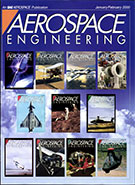Journal Article
A Computational Process for Early Stage Assessment of Automotive Buffeting and Wind Noise
2013-05-13
2013-01-1929
A computational process for early stage vehicle shape assessment for automotive front window buffeting and greenhouse wind noise is presented. It is a challenging problem in an experimental process as the vehicle geometry is not always finalized. For example, the buffeting behavior typically worsens during the vehicle development process as the vehicle gets tighter, leading to expensive late counter measures. We present a solution using previously validated CFD/CAA software based on the Lattice Boltzmann Method (LBM). A CAD model with realistic automotive geometry was chosen to simultaneously study the potential of different side mirror geometries to influence the front window buffeting and greenhouse wind noise phenomena. A glass mounted mirror and a door mounted mirror were used for this comparative study. Interior noise is investigated for the two phenomena studied. The unsteady flow is visualized and changes in the buffeting and wind noise behavior are explored.



